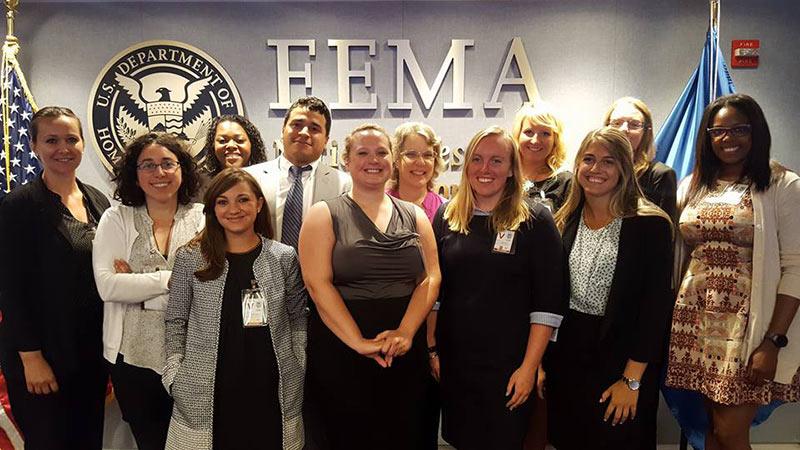Students learn about global humanitarian response
For 14 scholars at the Disaster Resilience Leadership Academy, this past July was a chance to learn about the humanitarian response to disasters.
The monthlong DRLA Summer Institute held in Washington, D.C., gave Tulane students an in-depth look at 12 organizations that respond to natural and man-made disasters, as well as U.S. and international organizations that provide services to refugees and internally displaced persons.
“Our students learned the processes organizations need to go through to advocate to the political entities that make policy and fund responses for change,” said Margie Morris, an adjunct instructor in the Tulane School of Social Work. “We covered recent events such as the World Humanitarian Summit, what improvements are needed to make the humanitarian response system more efficient and effective, and ... the role of media in covering disasters.”
"The real-world knowledge gained by hearing from disaster experts in their own environment as well as practicing how that organization could respond to a real-life disaster was invaluable for the students.”
Margie Morris
Students benefited from classroom lectures about theoretical disasters and learned about policy and procedures through field visits to organizations like the International Committee for the Red Cross and the International Organization for Migration, which focuses on the protection and legal issues facing migrants.
Other stops included the International Development Office for Foreign Disaster Assistance Operation Center, the Resilience AmeriCorps and the Newseum, where David Kerley of ABC News spoke on the role of media in covering disasters.
The students conducted other exercises: examining at the Nepal earthquake, debating current refugee issues and whether aid prolongs war, holding a mini-press conference on a U.S. disaster and making individual presentations on relevant topics. Morris said, “the real-world knowledge gained by hearing from disaster experts in their own environment as well as practicing how that organization could respond to a real-life disaster was invaluable for the students.”

